前言
本文的github仓库地址为:
https://github.com/Hy-1990/hy_bgmatting
由于模型文件过大,没放在仓库中,本文下面有模型下载地址。
项目结构
我们先看一下项目的结构,如图:
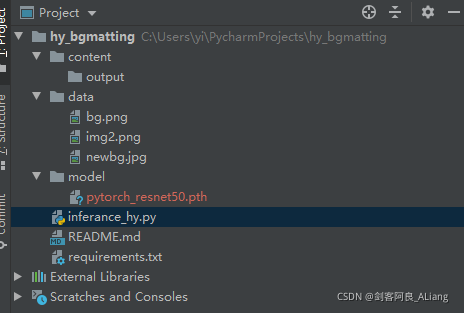
其中,model文件夹放的是模型文件,模型文件的下载地址为:
https://drive.google.com/drive/folders/1NmyTItr2jRac0nLoZMeixlcU1myMiYTs
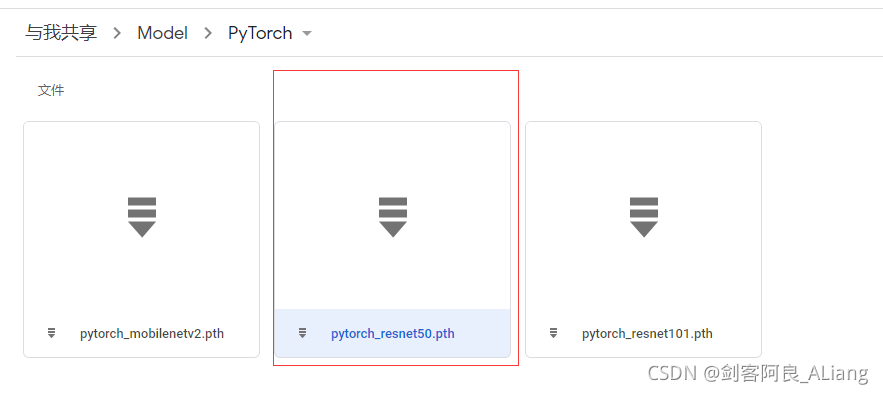
下载该模型放到model文件夹下。
依赖文件-requirements.txt,说明一下,pytorch的安装需要使用官网给出的,避免显卡驱动对应不上。可以参考我的另一篇文章关于pytorch的安装:
https://huyi-aliang.blog.csdn.net/article/details/120556923
依赖文件如下:
kornia==0.4.1 tensorboard==2.3.0 torch==1.7.0 torchvision==0.8.1 tqdm==4.51.0 opencv-python==4.4.0.44 onnxruntime==1.6.0
数据准备
我们需要准备一张照片以及照片的背景图,和你需要替换的图片。我这边选择的是BackgroundMattingV2给出的一些参考图,原始图与背景图如下:
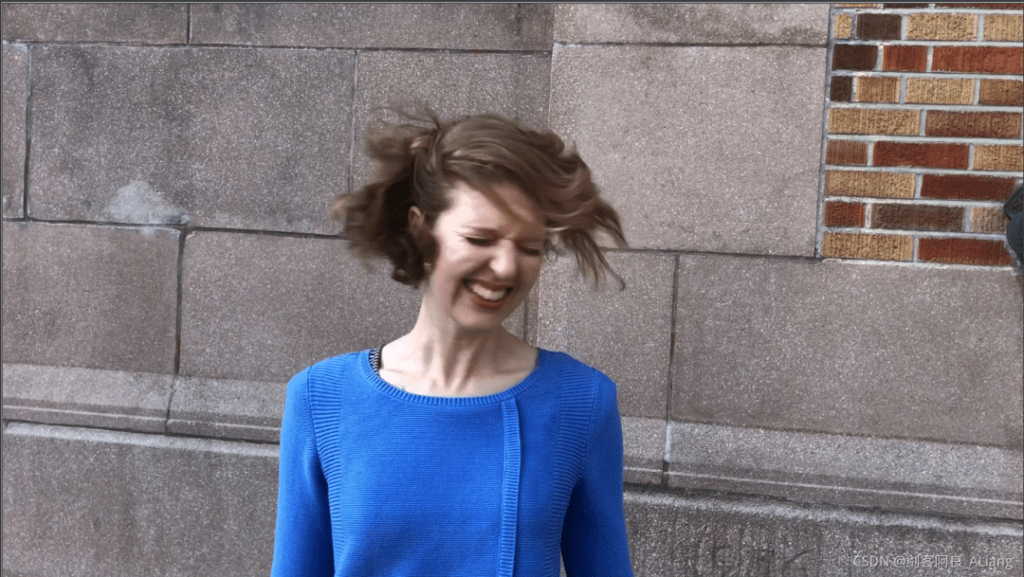
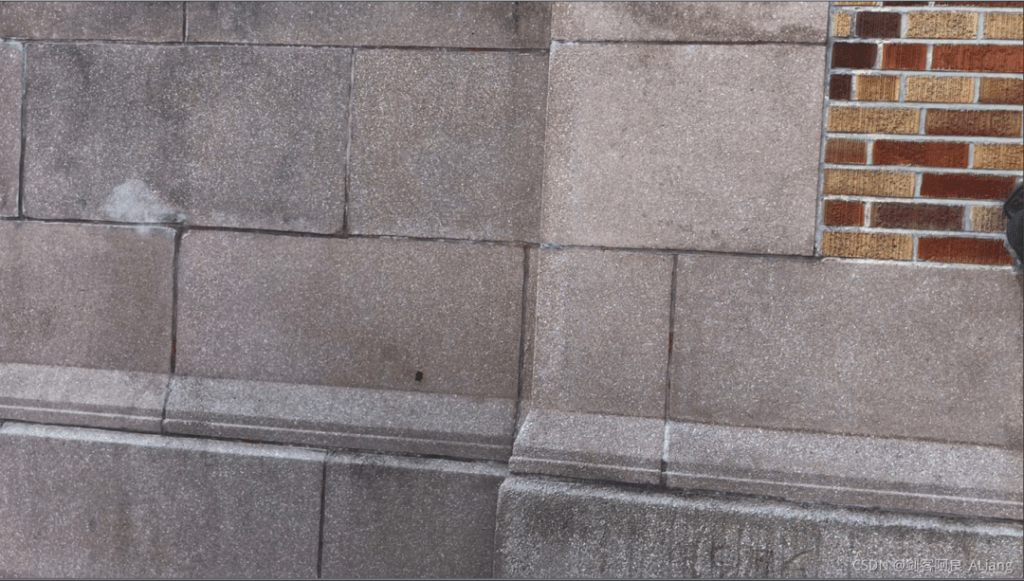
新的背景图(我随便找的)如下:

替换背景图代码
不废话了,上核心代码。
#!/usr/bin/env python
# -*- coding: utf-8 -*-
# @Time : 2021/11/14 21:24
# @Author : 剑客阿良_ALiang
# @Site :
# @File : inferance_hy.py
import argparse
import torch
import os
from torch.nn import functional as F
from torch.utils.data import DataLoader
from torchvision import transforms as T
from torchvision.transforms.functional import to_pil_image
from threading import Thread
from tqdm import tqdm
from torch.utils.data import Dataset
from PIL import Image
from typing import Callable, Optional, List, Tuple
import glob
from torch import nn
from torchvision.models.resnet import ResNet, Bottleneck
from torch import Tensor
import torchvision
import numpy as np
import cv2
import uuid
# --------------- hy ---------------
class HomographicAlignment:
"""
Apply homographic alignment on background to match with the source image.
"""
def __init__(self):
self.detector = cv2.ORB_create()
self.matcher = cv2.DescriptorMatcher_create(cv2.DESCRIPTOR_MATCHER_BRUTEFORCE)
def __call__(self, src, bgr):
src = np.asarray(src)
bgr = np.asarray(bgr)
keypoints_src, descriptors_src = self.detector.detectAndCompute(src, None)
keypoints_bgr, descriptors_bgr = self.detector.detectAndCompute(bgr, None)
matches = self.matcher.match(descriptors_bgr, descriptors_src, None)
matches.sort(key=lambda x: x.distance, reverse=False)
num_good_matches = int(len(matches) * 0.15)
matches = matches[:num_good_matches]
points_src = np.zeros((len(matches), 2), dtype=np.float32)
points_bgr = np.zeros((len(matches), 2), dtype=np.float32)
for i, match in enumerate(matches):
points_src[i, :] = keypoints_src[match.trainIdx].pt
points_bgr[i, :] = keypoints_bgr[match.queryIdx].pt
H, _ = cv2.findHomography(points_bgr, points_src, cv2.RANSAC)
h, w = src.shape[:2]
bgr = cv2.warpPerspective(bgr, H, (w, h))
msk = cv2.warpPerspective(np.ones((h, w)), H, (w, h))
# For areas that is outside of the background,
# We just copy pixels from the source.
bgr[msk != 1] = src[msk != 1]
src = Image.fromarray(src)
bgr = Image.fromarray(bgr)
return src, bgr
class Refiner(nn.Module):
# For TorchScript export optimization.
__constants__ = ['kernel_size', 'patch_crop_method', 'patch_replace_method']
def __init__(self,
mode: str,
sample_pixels: int,
threshold: float,
kernel_size: int = 3,
prevent_oversampling: bool = True,
patch_crop_method: str = 'unfold',
patch_replace_method: str = 'scatter_nd'):
super().__init__()
assert mode in ['full', 'sampling', 'thresholding']
assert kernel_size in [1, 3]
assert patch_crop_method in ['unfold', 'roi_align', 'gather']
assert patch_replace_method in ['scatter_nd', 'scatter_element']
self.mode = mode
self.sample_pixels = sample_pixels
self.threshold = threshold
self.kernel_size = kernel_size
self.prevent_oversampling = prevent_oversampling
self.patch_crop_method = patch_crop_method
self.patch_replace_method = patch_replace_method
channels = [32, 24, 16, 12, 4]
self.conv1 = nn.Conv2d(channels[0] + 6 + 4, channels[1], kernel_size, bias=False)
self.bn1 = nn.BatchNorm2d(channels[1])
self.conv2 = nn.Conv2d(channels[1], channels[2], kernel_size, bias=False)
self.bn2 = nn.BatchNorm2d(channels[2])
self.conv3 = nn.Conv2d(channels[2] + 6, channels[3], kernel_size, bias=False)
self.bn3 = nn.BatchNorm2d(channels[3])
self.conv4 = nn.Conv2d(channels[3], channels[4], kernel_size, bias=True)
self.relu = nn.ReLU(True)
def forward(self,
src: torch.Tensor,
bgr: torch.Tensor,
pha: torch.Tensor,
fgr: torch.Tensor,
err: torch.Tensor,
hid: torch.Tensor):
H_full, W_full = src.shape[2:]
H_half, W_half = H_full // 2, W_full // 2
H_quat, W_quat = H_full // 4, W_full // 4
src_bgr = torch.cat([src, bgr], dim=1)
if self.mode != 'full':
err = F.interpolate(err, (H_quat, W_quat), mode='bilinear', align_corners=False)
ref = self.select_refinement_regions(err)
idx = torch.nonzero(ref.squeeze(1))
idx = idx[:, 0], idx[:, 1], idx[:, 2]
if idx[0].size(0) > 0:
x = torch.cat([hid, pha, fgr], dim=1)
x = F.interpolate(x, (H_half, W_half), mode='bilinear', align_corners=False)
x = self.crop_patch(x, idx, 2, 3 if self.kernel_size == 3 else 0)
y = F.interpolate(src_bgr, (H_half, W_half), mode='bilinear', align_corners=False)
y = self.crop_patch(y, idx, 2, 3 if self.kernel_size == 3 else 0)
x = self.conv1(torch.cat([x, y], dim=1))
x = self.bn1(x)
x = self.relu(x)
x = self.conv2(x)
x = self.bn2(x)
x = self.relu(x)
x = F.interpolate(x, 8 if self.kernel_size == 3 else 4, mode='nearest')
y = self.crop_patch(src_bgr, idx, 4, 2 if self.kernel_size == 3 else 0)
x = self.conv3(torch.cat([x, y], dim=1))
x = self.bn3(x)
x = self.relu(x)
x = self.conv4(x)
out = torch.cat([pha, fgr], dim=1)
out = F.interpolate(out, (H_full, W_full), mode='bilinear', align_corners=False)
out = self.replace_patch(out, x, idx)
pha = out[:, :1]
fgr = out[:, 1:]
else:
pha = F.interpolate(pha, (H_full, W_full), mode='bilinear', align_corners=False)
fgr = F.interpolate(fgr, (H_full, W_full), mode='bilinear', align_corners=False)
else:
x = torch.cat([hid, pha, fgr], dim=1)
x = F.interpolate(x, (H_half, W_half), mode='bilinear', align_corners=False)
y = F.interpolate(src_bgr, (H_half, W_half), mode='bilinear', align_corners=False)
if self.kernel_size == 3:
x = F.pad(x, (3, 3, 3, 3))
y = F.pad(y, (3, 3, 3, 3))
x = self.conv1(torch.cat([x, y], dim=1))
x = self.bn1(x)
x = self.relu(x)
x = self.conv2(x)
x = self.bn2(x)
x = self.relu(x)
if self.kernel_size == 3:
x = F.interpolate(x, (H_full + 4, W_full + 4))
y = F.pad(src_bgr, (2, 2, 2, 2))
else:
x = F.interpolate(x, (H_full, W_full), mode='nearest')
y = src_bgr
x = self.conv3(torch.cat([x, y], dim=1))
x = self.bn3(x)
x = self.relu(x)
x = self.conv4(x)
pha = x[:, :1]
fgr = x[:, 1:]
ref = torch.ones((src.size(0), 1, H_quat, W_quat), device=src.device, dtype=src.dtype)
return pha, fgr, ref
def select_refinement_regions(self, err: torch.Tensor):
"""
Select refinement regions.
Input:
err: error map (B, 1, H, W)
Output:
ref: refinement regions (B, 1, H, W). FloatTensor. 1 is selected, 0 is not.
"""
if self.mode == 'sampling':
# Sampling mode.
b, _, h, w = err.shape
err = err.view(b, -1)
idx = err.topk(self.sample_pixels // 16, dim=1, sorted=False).indices
ref = torch.zeros_like(err)
ref.scatter_(1, idx, 1.)
if self.prevent_oversampling:
ref.mul_(err.gt(0).float())
ref = ref.view(b, 1, h, w)
else:
# Thresholding mode.
ref = err.gt(self.threshold).float()
return ref
def crop_patch(self,
x: torch.Tensor,
idx: Tuple[torch.Tensor, torch.Tensor, torch.Tensor],
size: int,
padding: int):
"""
Crops selected patches from image given indices.
Inputs:
x: image (B, C, H, W).
idx: selection indices Tuple[(P,), (P,), (P,),], where the 3 values are (B, H, W) index.
size: center size of the patch, also stride of the crop.
padding: expansion size of the patch.
Output:
patch: (P, C, h, w), where h = w = size + 2 * padding.
"""
if padding != 0:
x = F.pad(x, (padding,) * 4)
if self.patch_crop_method == 'unfold':
# Use unfold. Best performance for PyTorch and TorchScript.
return x.permute(0, 2, 3, 1) \
.unfold(1, size + 2 * padding, size) \
.unfold(2, size + 2 * padding, size)[idx[0], idx[1], idx[2]]
elif self.patch_crop_method == 'roi_align':
# Use roi_align. Best compatibility for ONNX.
idx = idx[0].type_as(x), idx[1].type_as(x), idx[2].type_as(x)
b = idx[0]
x1 = idx[2] * size - 0.5
y1 = idx[1] * size - 0.5
x2 = idx[2] * size + size + 2 * padding - 0.5
y2 = idx[1] * size + size + 2 * padding - 0.5
boxes = torch.stack([b, x1, y1, x2, y2], dim=1)
return torchvision.ops.roi_align(x, boxes, size + 2 * padding, sampling_ratio=1)
else:
# Use gather. Crops out patches pixel by pixel.
idx_pix = self.compute_pixel_indices(x, idx, size, padding)
pat = torch.gather(x.view(-1), 0, idx_pix.view(-1))
pat = pat.view(-1, x.size(1), size + 2 * padding, size + 2 * padding)
return pat
def replace_patch(self,
x: torch.Tensor,
y: torch.Tensor,
idx: Tuple[torch.Tensor, torch.Tensor, torch.Tensor]):
"""
Replaces patches back into image given index.
Inputs:
x: image (B, C, H, W)
y: patches (P, C, h, w)
idx: selection indices Tuple[(P,), (P,), (P,)] where the 3 values are (B, H, W) index.
Output:
image: (B, C, H, W), where patches at idx locations are replaced with y.
"""
xB, xC, xH, xW = x.shape
yB, yC, yH, yW = y.shape
if self.patch_replace_method == 'scatter_nd':
# Use scatter_nd. Best performance for PyTorch and TorchScript. Replacing patch by patch.
x = x.view(xB, xC, xH // yH, yH, xW // yW, yW).permute(0, 2, 4, 1, 3, 5)
x[idx[0], idx[1], idx[2]] = y
x = x.permute(0, 3, 1, 4, 2, 5).view(xB, xC, xH, xW)
return x
else:
# Use scatter_element. Best compatibility for ONNX. Replacing pixel by pixel.
idx_pix = self.compute_pixel_indices(x, idx, size=4, padding=0)
return x.view(-1).scatter_(0, idx_pix.view(-1), y.view(-1)).view(x.shape)
def compute_pixel_indices(self,
x: torch.Tensor,
idx: Tuple[torch.Tensor, torch.Tensor, torch.Tensor],
size: int,
padding: int):
"""
Compute selected pixel indices in the tensor.
Used for crop_method == 'gather' and replace_method == 'scatter_element', which crop and replace pixel by pixel.
Input:
x: image: (B, C, H, W)
idx: selection indices Tuple[(P,), (P,), (P,),], where the 3 values are (B, H, W) index.
size: center size of the patch, also stride of the crop.
padding: expansion size of the patch.
Output:
idx: (P, C, O, O) long tensor where O is the output size: size + 2 * padding, P is number of patches.
the element are indices pointing to the input x.view(-1).
"""
B, C, H, W = x.shape
S, P = size, padding
O = S + 2 * P
b, y, x = idx
n = b.size(0)
c = torch.arange(C)
o = torch.arange(O)
idx_pat = (c * H * W).view(C, 1, 1).expand([C, O, O]) + (o * W).view(1, O, 1).expand([C, O, O]) + o.view(1, 1,
O).expand(
[C, O, O])
idx_loc = b * W * H + y * W * S + x * S
idx_pix = idx_loc.view(-1, 1, 1, 1).expand([n, C, O, O]) + idx_pat.view(1, C, O, O).expand([n, C, O, O])
return idx_pix
def load_matched_state_dict(model, state_dict, print_stats=True):
"""
Only loads weights that matched in key and shape. Ignore other weights.
"""
num_matched, num_total = 0, 0
curr_state_dict = model.state_dict()
for key in curr_state_dict.keys():
num_total += 1
if key in state_dict and curr_state_dict[key].shape == state_dict[key].shape:
curr_state_dict[key] = state_dict[key]
num_matched += 1
model.load_state_dict(curr_state_dict)
if print_stats:
print(f'Loaded state_dict: {num_matched}/{num_total} matched')
def _make_divisible(v: float, divisor: int, min_value: Optional[int] = None) -> int:
"""
This function is taken from the original tf repo.
It ensures that all layers have a channel number that is divisible by 8
It can be seen here:
https://github.com/tensorflow/models/blob/master/research/slim/nets/mobilenet/mobilenet.py
"""
if min_value is None:
min_value = divisor
new_v = max(min_value, int(v + divisor / 2) // divisor * divisor)
# Make sure that round down does not go down by more than 10%.
if new_v < 0.9 * v:
new_v += divisor
return new_v
class ConvNormActivation(torch.nn.Sequential):
def __init__(
self,
in_channels: int,
out_channels: int,
kernel_size: int = 3,
stride: int = 1,
padding: Optional[int] = None,
groups: int = 1,
norm_layer: Optional[Callable[..., torch.nn.Module]] = torch.nn.BatchNorm2d,
activation_layer: Optional[Callable[..., torch.nn.Module]] = torch.nn.ReLU,
dilation: int = 1,
inplace: bool = True,
) -> None:
if padding is None:
padding = (kernel_size - 1) // 2 * dilation
layers = [torch.nn.Conv2d(in_channels, out_channels, kernel_size, stride, padding,
dilation=dilation, groups=groups, bias=norm_layer is None)]
if norm_layer is not None:
layers.append(norm_layer(out_channels))
if activation_layer is not None:
layers.append(activation_layer(inplace=inplace))
super().__init__(*layers)
self.out_channels = out_channels
class InvertedResidual(nn.Module):
def __init__(
self,
inp: int,
oup: int,
stride: int,
expand_ratio: int,
norm_layer: Optional[Callable[..., nn.Module]] = None
) -> None:
super(InvertedResidual, self).__init__()
self.stride = stride
assert stride in [1, 2]
if norm_layer is None:
norm_layer = nn.BatchNorm2d
hidden_dim = int(round(inp * expand_ratio))
self.use_res_connect = self.stride == 1 and inp == oup
layers: List[nn.Module] = []
if expand_ratio != 1:
# pw
layers.append(ConvNormActivation(inp, hidden_dim, kernel_size=1, norm_layer=norm_layer,
activation_layer=nn.ReLU6))
layers.extend([
# dw
ConvNormActivation(hidden_dim, hidden_dim, stride=stride, groups=hidden_dim, norm_layer=norm_layer,
activation_layer=nn.ReLU6),
# pw-linear
nn.Conv2d(hidden_dim, oup, 1, 1, 0, bias=False),
norm_layer(oup),
])
self.conv = nn.Sequential(*layers)
self.out_channels = oup
self._is_cn = stride > 1
def forward(self, x: Tensor) -> Tensor:
if self.use_res_connect:
return x + self.conv(x)
else:
return self.conv(x)
class MobileNetV2(nn.Module):
def __init__(
self,
num_classes: int = 1000,
width_mult: float = 1.0,
inverted_residual_setting: Optional[List[List[int]]] = None,
round_nearest: int = 8,
block: Optional[Callable[..., nn.Module]] = None,
norm_layer: Optional[Callable[..., nn.Module]] = None
) -> None:
"""
MobileNet V2 main class
Args:
num_classes (int): Number of classes
width_mult (float): Width multiplier - adjusts number of channels in each layer by this amount
inverted_residual_setting: Network structure
round_nearest (int): Round the number of channels in each layer to be a multiple of this number
Set to 1 to turn off rounding
block: Module specifying inverted residual building block for mobilenet
norm_layer: Module specifying the normalization layer to use
"""
super(MobileNetV2, self).__init__()
if block is None:
block = InvertedResidual
if norm_layer is None:
norm_layer = nn.BatchNorm2d
input_channel = 32
last_channel = 1280
if inverted_residual_setting is None:
inverted_residual_setting = [
# t, c, n, s
[1, 16, 1, 1],
[6, 24, 2, 2],
[6, 32, 3, 2],
[6, 64, 4, 2],
[6, 96, 3, 1],
[6, 160, 3, 2],
[6, 320, 1, 1],
]
# only check the first element, assuming user knows t,c,n,s are required
if len(inverted_residual_setting) == 0 or len(inverted_residual_setting[0]) != 4:
raise ValueError("inverted_residual_setting should be non-empty "
"or a 4-element list, got {}".format(inverted_residual_setting))
# building first layer
input_channel = _make_divisible(input_channel * width_mult, round_nearest)
self.last_channel = _make_divisible(last_channel * max(1.0, width_mult), round_nearest)
features: List[nn.Module] = [ConvNormActivation(3, input_channel, stride=2, norm_layer=norm_layer,
activation_layer=nn.ReLU6)]
# building inverted residual blocks
for t, c, n, s in inverted_residual_setting:
output_channel = _make_divisible(c * width_mult, round_nearest)
for i in range(n):
stride = s if i == 0 else 1
features.append(block(input_channel, output_channel, stride, expand_ratio=t, norm_layer=norm_layer))
input_channel = output_channel
# building last several layers
features.append(ConvNormActivation(input_channel, self.last_channel, kernel_size=1, norm_layer=norm_layer,
activation_layer=nn.ReLU6))
# make it nn.Sequential
self.features = nn.Sequential(*features)
# building classifier
self.classifier = nn.Sequential(
nn.Dropout(0.2),
nn.Linear(self.last_channel, num_classes),
)
# weight initialization
for m in self.modules():
if isinstance(m, nn.Conv2d):
nn.init.kaiming_normal_(m.weight, mode='fan_out')
if m.bias is not None:
nn.init.zeros_(m.bias)
elif isinstance(m, (nn.BatchNorm2d, nn.GroupNorm)):
nn.init.ones_(m.weight)
nn.init.zeros_(m.bias)
elif isinstance(m, nn.Linear):
nn.init.normal_(m.weight, 0, 0.01)
nn.init.zeros_(m.bias)
def _forward_impl(self, x: Tensor) -> Tensor:
# This exists since TorchScript doesn't support inheritance, so the superclass method
# (this one) needs to have a name other than `forward` that can be accessed in a subclass
x = self.features(x)
# Cannot use "squeeze" as batch-size can be 1
x = nn.functional.adaptive_avg_pool2d(x, (1, 1))
x = torch.flatten(x, 1)
x = self.classifier(x)
return x
def forward(self, x: Tensor) -> Tensor:
return self._forward_impl(x)
class MobileNetV2Encoder(MobileNetV2):
"""
MobileNetV2Encoder inherits from torchvision's official MobileNetV2. It is modified to
use dilation on the last block to maintain output stride 16, and deleted the
classifier block that was originally used for classification. The forward method
additionally returns the feature maps at all resolutions for decoder's use.
"""
def __init__(self, in_channels, norm_layer=None):
super().__init__()
# Replace first conv layer if in_channels doesn't match.
if in_channels != 3:
self.features[0][0] = nn.Conv2d(in_channels, 32, 3, 2, 1, bias=False)
# Remove last block
self.features = self.features[:-1]
# Change to use dilation to maintain output stride = 16
self.features[14].conv[1][0].stride = (1, 1)
for feature in self.features[15:]:
feature.conv[1][0].dilation = (2, 2)
feature.conv[1][0].padding = (2, 2)
# Delete classifier
del self.classifier
def forward(self, x):
x0 = x # 1/1
x = self.features[0](x)
x = self.features[1](x)
x1 = x # 1/2
x = self.features[2](x)
x = self.features[3](x)
x2 = x # 1/4
x = self.features[4](x)
x = self.features[5](x)
x = self.features[6](x)
x3 = x # 1/8
x = self.features[7](x)
x = self.features[8](x)
x = self.features[9](x)
x = self.features[10](x)
x = self.features[11](x)
x = self.features[12](x)
x = self.features[13](x)
x = self.features[14](x)
x = self.features[15](x)
x = self.features[16](x)
x = self.features[17](x)
x4 = x # 1/16
return x4, x3, x2, x1, x0
class Decoder(nn.Module):
def __init__(self, channels, feature_channels):
super().__init__()
self.conv1 = nn.Conv2d(feature_channels[0] + channels[0], channels[1], 3, padding=1, bias=False)
self.bn1 = nn.BatchNorm2d(channels[1])
self.conv2 = nn.Conv2d(feature_channels[1] + channels[1], channels[2], 3, padding=1, bias=False)
self.bn2 = nn.BatchNorm2d(channels[2])
self.conv3 = nn.Conv2d(feature_channels[2] + channels[2], channels[3], 3, padding=1, bias=False)
self.bn3 = nn.BatchNorm2d(channels[3])
self.conv4 = nn.Conv2d(feature_channels[3] + channels[3], channels[4], 3, padding=1)
self.relu = nn.ReLU(True)
def forward(self, x4, x3, x2, x1, x0):
x = F.interpolate(x4, size=x3.shape[2:], mode='bilinear', align_corners=False)
x = torch.cat([x, x3], dim=1)
x = self.conv1(x)
x = self.bn1(x)
x = self.relu(x)
x = F.interpolate(x, size=x2.shape[2:], mode='bilinear', align_corners=False)
x = torch.cat([x, x2], dim=1)
x = self.conv2(x)
x = self.bn2(x)
x = self.relu(x)
x = F.interpolate(x, size=x1.shape[2:], mode='bilinear', align_corners=False)
x = torch.cat([x, x1], dim=1)
x = self.conv3(x)
x = self.bn3(x)
x = self.relu(x)
x = F.interpolate(x, size=x0.shape[2:], mode='bilinear', align_corners=False)
x = torch.cat([x, x0], dim=1)
x = self.conv4(x)
return x
class ASPPPooling(nn.Sequential):
def __init__(self, in_channels: int, out_channels: int) -> None:
super(ASPPPooling, self).__init__(
nn.AdaptiveAvgPool2d(1),
nn.Conv2d(in_channels, out_channels, 1, bias=False),
nn.BatchNorm2d(out_channels),
nn.ReLU())
def forward(self, x: torch.Tensor) -> torch.Tensor:
size = x.shape[-2:]
for mod in self:
x = mod(x)
return F.interpolate(x, size=size, mode='bilinear', align_corners=False)
class ASPPConv(nn.Sequential):
def __init__(self, in_channels: int, out_channels: int, dilation: int) -> None:
modules = [
nn.Conv2d(in_channels, out_channels, 3, padding=dilation, dilation=dilation, bias=False),
nn.BatchNorm2d(out_channels),
nn.ReLU()
]
super(ASPPConv, self).__init__(*modules)
class ASPP(nn.Module):
def __init__(self, in_channels: int, atrous_rates: List[int], out_channels: int = 256) -> None:
super(ASPP, self).__init__()
modules = []
modules.append(nn.Sequential(
nn.Conv2d(in_channels, out_channels, 1, bias=False),
nn.BatchNorm2d(out_channels),
nn.ReLU()))
rates = tuple(atrous_rates)
for rate in rates:
modules.append(ASPPConv(in_channels, out_channels, rate))
modules.append(ASPPPooling(in_channels, out_channels))
self.convs = nn.ModuleList(modules)
self.project = nn.Sequential(
nn.Conv2d(len(self.convs) * out_channels, out_channels, 1, bias=False),
nn.BatchNorm2d(out_channels),
nn.ReLU(),
nn.Dropout(0.5))
def forward(self, x: torch.Tensor) -> torch.Tensor:
_res = []
for conv in self.convs:
_res.append(conv(x))
res = torch.cat(_res, dim=1)
return self.project(res)
class ResNetEncoder(ResNet):
layers = {
'resnet50': [3, 4, 6, 3],
'resnet101': [3, 4, 23, 3],
}
def __init__(self, in_channels, variant='resnet101', norm_layer=None):
super().__init__(
block=Bottleneck,
layers=self.layers[variant],
replace_stride_with_dilation=[False, False, True],
norm_layer=norm_layer)
# Replace first conv layer if in_channels doesn't match.
if in_channels != 3:
self.conv1 = nn.Conv2d(in_channels, 64, 7, 2, 3, bias=False)
# Delete fully-connected layer
del self.avgpool
del self.fc
def forward(self, x):
x0 = x # 1/1
x = self.conv1(x)
x = self.bn1(x)
x = self.relu(x)
x1 = x # 1/2
x = self.maxpool(x)
x = self.layer1(x)
x2 = x # 1/4
x = self.layer2(x)
x3 = x # 1/8
x = self.layer3(x)
x = self.layer4(x)
x4 = x # 1/16
return x4, x3, x2, x1, x0
class Base(nn.Module):
"""
A generic implementation of the base encoder-decoder network inspired by DeepLab.
Accepts arbitrary channels for input and output.
"""
def __init__(self, backbone: str, in_channels: int, out_channels: int):
super().__init__()
assert backbone in ["resnet50", "resnet101", "mobilenetv2"]
if backbone in ['resnet50', 'resnet101']:
self.backbone = ResNetEncoder(in_channels, variant=backbone)
self.aspp = ASPP(2048, [3, 6, 9])
self.decoder = Decoder([256, 128, 64, 48, out_channels], [512, 256, 64, in_channels])
else:
self.backbone = MobileNetV2Encoder(in_channels)
self.aspp = ASPP(320, [3, 6, 9])
self.decoder = Decoder([256, 128, 64, 48, out_channels], [32, 24, 16, in_channels])
def forward(self, x):
x, *shortcuts = self.backbone(x)
x = self.aspp(x)
x = self.decoder(x, *shortcuts)
return x
def load_pretrained_deeplabv3_state_dict(self, state_dict, print_stats=True):
# Pretrained DeepLabV3 models are provided by <https://github.com/VainF/DeepLabV3Plus-Pytorch>.
# This method converts and loads their pretrained state_dict to match with our model structure.
# This method is not needed if you are not planning to train from deeplab weights.
# Use load_state_dict() for normal weight loading.
# Convert state_dict naming for aspp module
state_dict = {k.replace('classifier.classifier.0', 'aspp'): v for k, v in state_dict.items()}
if isinstance(self.backbone, ResNetEncoder):
# ResNet backbone does not need change.
load_matched_state_dict(self, state_dict, print_stats)
else:
# Change MobileNetV2 backbone to state_dict format, then change back after loading.
backbone_features = self.backbone.features
self.backbone.low_level_features = backbone_features[:4]
self.backbone.high_level_features = backbone_features[4:]
del self.backbone.features
load_matched_state_dict(self, state_dict, print_stats)
self.backbone.features = backbone_features
del self.backbone.low_level_features
del self.backbone.high_level_features
class MattingBase(Base):
def __init__(self, backbone: str):
super().__init__(backbone, in_channels=6, out_channels=(1 + 3 + 1 + 32))
def forward(self, src, bgr):
x = torch.cat([src, bgr], dim=1)
x, *shortcuts = self.backbone(x)
x = self.aspp(x)
x = self.decoder(x, *shortcuts)
pha = x[:, 0:1].clamp_(0., 1.)
fgr = x[:, 1:4].add(src).clamp_(0., 1.)
err = x[:, 4:5].clamp_(0., 1.)
hid = x[:, 5:].relu_()
return pha, fgr, err, hid
class MattingRefine(MattingBase):
def __init__(self,
backbone: str,
backbone_scale: float = 1 / 4,
refine_mode: str = 'sampling',
refine_sample_pixels: int = 80_000,
refine_threshold: float = 0.1,
refine_kernel_size: int = 3,
refine_prevent_oversampling: bool = True,
refine_patch_crop_method: str = 'unfold',
refine_patch_replace_method: str = 'scatter_nd'):
assert backbone_scale <= 1 / 2, 'backbone_scale should not be greater than 1/2'
super().__init__(backbone)
self.backbone_scale = backbone_scale
self.refiner = Refiner(refine_mode,
refine_sample_pixels,
refine_threshold,
refine_kernel_size,
refine_prevent_oversampling,
refine_patch_crop_method,
refine_patch_replace_method)
def forward(self, src, bgr):
assert src.size() == bgr.size(), 'src and bgr must have the same shape'
assert src.size(2) // 4 * 4 == src.size(2) and src.size(3) // 4 * 4 == src.size(3), \
'src and bgr must have width and height that are divisible by 4'
# Downsample src and bgr for backbone
src_sm = F.interpolate(src,
scale_factor=self.backbone_scale,
mode='bilinear',
align_corners=False,
recompute_scale_factor=True)
bgr_sm = F.interpolate(bgr,
scale_factor=self.backbone_scale,
mode='bilinear',
align_corners=False,
recompute_scale_factor=True)
# Base
x = torch.cat([src_sm, bgr_sm], dim=1)
x, *shortcuts = self.backbone(x)
x = self.aspp(x)
x = self.decoder(x, *shortcuts)
pha_sm = x[:, 0:1].clamp_(0., 1.)
fgr_sm = x[:, 1:4]
err_sm = x[:, 4:5].clamp_(0., 1.)
hid_sm = x[:, 5:].relu_()
# Refiner
pha, fgr, ref_sm = self.refiner(src, bgr, pha_sm, fgr_sm, err_sm, hid_sm)
# Clamp outputs
pha = pha.clamp_(0., 1.)
fgr = fgr.add_(src).clamp_(0., 1.)
fgr_sm = src_sm.add_(fgr_sm).clamp_(0., 1.)
return pha, fgr, pha_sm, fgr_sm, err_sm, ref_sm
class ImagesDataset(Dataset):
def __init__(self, root, mode='RGB', transforms=None):
self.transforms = transforms
self.mode = mode
self.filenames = sorted([*glob.glob(os.path.join(root, '**', '*.jpg'), recursive=True),
*glob.glob(os.path.join(root, '**', '*.png'), recursive=True)])
def __len__(self):
return len(self.filenames)
def __getitem__(self, idx):
with Image.open(self.filenames[idx]) as img:
img = img.convert(self.mode)
if self.transforms:
img = self.transforms(img)
return img
class NewImagesDataset(Dataset):
def __init__(self, root, mode='RGB', transforms=None):
self.transforms = transforms
self.mode = mode
self.filenames = [root]
print(self.filenames)
def __len__(self):
return len(self.filenames)
def __getitem__(self, idx):
with Image.open(self.filenames[idx]) as img:
img = img.convert(self.mode)
if self.transforms:
img = self.transforms(img)
return img
class ZipDataset(Dataset):
def __init__(self, datasets: List[Dataset], transforms=None, assert_equal_length=False):
self.datasets = datasets
self.transforms = transforms
if assert_equal_length:
for i in range(1, len(datasets)):
assert len(datasets[i]) == len(datasets[i - 1]), 'Datasets are not equal in length.'
def __len__(self):
return max(len(d) for d in self.datasets)
def __getitem__(self, idx):
x = tuple(d[idx % len(d)] for d in self.datasets)
print(x)
if self.transforms:
x = self.transforms(*x)
return x
class PairCompose(T.Compose):
def __call__(self, *x):
for transform in self.transforms:
x = transform(*x)
return x
class PairApply:
def __init__(self, transforms):
self.transforms = transforms
def __call__(self, *x):
return [self.transforms(xi) for xi in x]
# --------------- Arguments ---------------
parser = argparse.ArgumentParser(description='hy-replace-background')
parser.add_argument('--model-type', type=str, required=False, choices=['mattingbase', 'mattingrefine'],
default='mattingrefine')
parser.add_argument('--model-backbone', type=str, required=False, choices=['resnet101', 'resnet50', 'mobilenetv2'],
default='resnet50')
parser.add_argument('--model-backbone-scale', type=float, default=0.25)
parser.add_argument('--model-checkpoint', type=str, required=False, default='model/pytorch_resnet50.pth')
parser.add_argument('--model-refine-mode', type=str, default='sampling', choices=['full', 'sampling', 'thresholding'])
parser.add_argument('--model-refine-sample-pixels', type=int, default=80_000)
parser.add_argument('--model-refine-threshold', type=float, default=0.7)
parser.add_argument('--model-refine-kernel-size', type=int, default=3)
parser.add_argument('--device', type=str, choices=['cpu', 'cuda'], default='cuda')
parser.add_argument('--num-workers', type=int, default=0,
help='number of worker threads used in DataLoader. Note that Windows need to use single thread (0).')
parser.add_argument('--preprocess-alignment', action='store_true')
parser.add_argument('--output-dir', type=str, required=False, default='content/output')
parser.add_argument('--output-types', type=str, required=False, nargs='+',
choices=['com', 'pha', 'fgr', 'err', 'ref', 'new'],
default=['new'])
parser.add_argument('-y', action='store_true')
def handle(image_path: str, bgr_path: str, new_bg: str):
parser.add_argument('--images-src', type=str, required=False, default=image_path)
parser.add_argument('--images-bgr', type=str, required=False, default=bgr_path)
args = parser.parse_args()
assert 'err' not in args.output_types or args.model_type in ['mattingbase', 'mattingrefine'], \
'Only mattingbase and mattingrefine support err output'
assert 'ref' not in args.output_types or args.model_type in ['mattingrefine'], \
'Only mattingrefine support ref output'
# --------------- Main ---------------
device = torch.device(args.device)
# Load model
if args.model_type == 'mattingbase':
model = MattingBase(args.model_backbone)
if args.model_type == 'mattingrefine':
model = MattingRefine(
args.model_backbone,
args.model_backbone_scale,
args.model_refine_mode,
args.model_refine_sample_pixels,
args.model_refine_threshold,
args.model_refine_kernel_size)
model = model.to(device).eval()
model.load_state_dict(torch.load(args.model_checkpoint, map_location=device), strict=False)
# Load images
dataset = ZipDataset([
NewImagesDataset(args.images_src),
NewImagesDataset(args.images_bgr),
], assert_equal_length=True, transforms=PairCompose([
HomographicAlignment() if args.preprocess_alignment else PairApply(nn.Identity()),
PairApply(T.ToTensor())
]))
dataloader = DataLoader(dataset, batch_size=1, num_workers=args.num_workers, pin_memory=True)
# # Create output directory
# if os.path.exists(args.output_dir):
# if args.y or input(f'Directory {args.output_dir} already exists. Override? [Y/N]: ').lower() == 'y':
# shutil.rmtree(args.output_dir)
# else:
# exit()
for output_type in args.output_types:
if os.path.exists(os.path.join(args.output_dir, output_type)) is False:
os.makedirs(os.path.join(args.output_dir, output_type))
# Worker function
def writer(img, path):
img = to_pil_image(img[0].cpu())
img.save(path)
# Worker function
def writer_hy(img, new_bg, path):
img = to_pil_image(img[0].cpu())
img_size = img.size
new_bg_img = Image.open(new_bg).convert('RGBA')
new_bg_img.resize(img_size, Image.ANTIALIAS)
out = Image.alpha_composite(new_bg_img, img)
out.save(path)
result_file_name = str(uuid.uuid4())
# Conversion loop
with torch.no_grad():
for i, (src, bgr) in enumerate(tqdm(dataloader)):
src = src.to(device, non_blocking=True)
bgr = bgr.to(device, non_blocking=True)
if args.model_type == 'mattingbase':
pha, fgr, err, _ = model(src, bgr)
elif args.model_type == 'mattingrefine':
pha, fgr, _, _, err, ref = model(src, bgr)
pathname = dataset.datasets[0].filenames[i]
pathname = os.path.relpath(pathname, args.images_src)
pathname = os.path.splitext(pathname)[0]
if 'new' in args.output_types:
new = torch.cat([fgr * pha.ne(0), pha], dim=1)
Thread(target=writer_hy,
args=(new, new_bg, os.path.join(args.output_dir, 'new', result_file_name + '.png'))).start()
if 'com' in args.output_types:
com = torch.cat([fgr * pha.ne(0), pha], dim=1)
Thread(target=writer, args=(com, os.path.join(args.output_dir, 'com', pathname + '.png'))).start()
if 'pha' in args.output_types:
Thread(target=writer, args=(pha, os.path.join(args.output_dir, 'pha', pathname + '.jpg'))).start()
if 'fgr' in args.output_types:
Thread(target=writer, args=(fgr, os.path.join(args.output_dir, 'fgr', pathname + '.jpg'))).start()
if 'err' in args.output_types:
err = F.interpolate(err, src.shape[2:], mode='bilinear', align_corners=False)
Thread(target=writer, args=(err, os.path.join(args.output_dir, 'err', pathname + '.jpg'))).start()
if 'ref' in args.output_types:
ref = F.interpolate(ref, src.shape[2:], mode='nearest')
Thread(target=writer, args=(ref, os.path.join(args.output_dir, 'ref', pathname + '.jpg'))).start()
return os.path.join(args.output_dir, 'new', result_file_name + '.png')
if __name__ == '__main__':
handle("data/img2.png", "data/bg.png", "data/newbg.jpg")
代码说明
1、handle方法的参数一次为:原始图路径、原始背景图路径、新背景图路径。
1、我将原项目中inferance_images使用的类都移到一个文件中,精简一下项目结构。
2、ImagesDateSet我重新构造了一个新的NewImagesDateSet,,主要是因为我只打算处理一张图片。
3、最终图片都存在相同目录下,避免重复使用uuid作为文件名。
4、本文给出的代码没有对文件格式做严格校正,不是很关键,如果需要补充就行。
验证一下效果
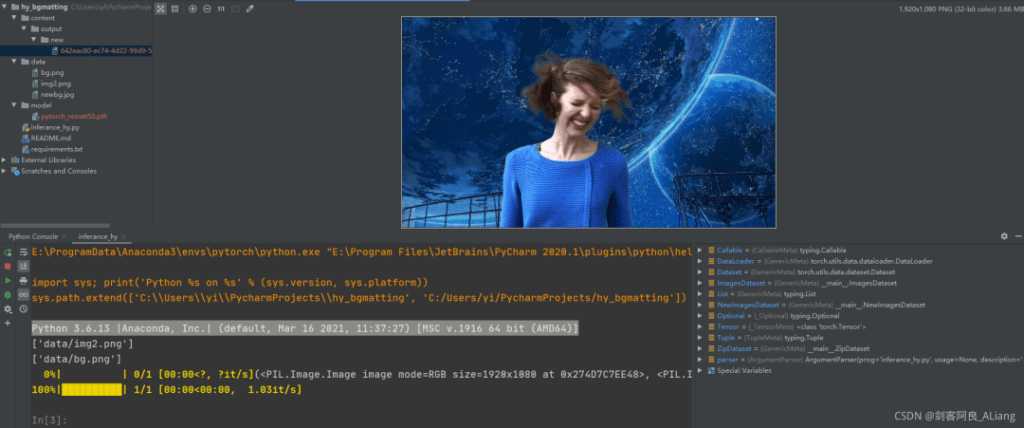
怎么样?还是很炫吧!
总结
研究这个开源项目以及编写替换背景的功能,花了我两天的时间,需要对项目本身的很多设置需要了解。以后有机会,我会把yolov5开源项目也魔改一下,基于作者给出的效果实现作出自己想要的东西,会非常有意思。本文的项目功能只是临时做的,不是很健壮,想用的话自己再发挥发挥自己的想象力吧。
文章转自: https://huyi-aliang.blog.csdn.net/article/details/121326563
.
转载请注明:拈花古佛 » Python实现照片的人物背景替换,精细到发丝



